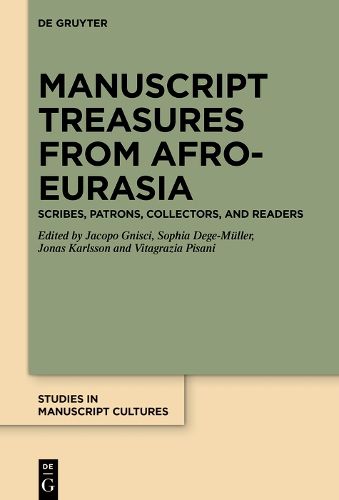Readings Newsletter
Become a Readings Member to make your shopping experience even easier.
Sign in or sign up for free!
You’re not far away from qualifying for FREE standard shipping within Australia
You’ve qualified for FREE standard shipping within Australia
The cart is loading…






Throughout the Middle Ages manuscripts were routinely commissioned, copied, illustrated, displayed, read, and transferred across both sides of the Mediterranean. Their significance as vehicles for the transmission of visual and textual knowledge is well known. Less understood, particularly when it comes to non-Latin manuscripts, is the complex web of spiritual, material, intellectual, and emotional interactions that influenced their production and reception. The twelve essays presented here seek to address this gap by exploring the very direct relationships that existed between manuscripts and those individuals or communities that were involved in their making. The volume is broad in scope, covering written artefacts produced between Late Antiquity and the fifteenth century and presenting case studies that range from the British Isles to East Africa and from Spain and the Maghreb to Armenia. The visual and textual evidence preserved in these manuscripts is interpreted by drawing from disciplines such as palaeography, art history, codicology, and textual criticism. The result is a book that details the impact of makers, patrons, collectors, and readers on the making and circulation of manuscripts across Afro-Eurasia.
$9.00 standard shipping within Australia
FREE standard shipping within Australia for orders over $100.00
Express & International shipping calculated at checkout
Throughout the Middle Ages manuscripts were routinely commissioned, copied, illustrated, displayed, read, and transferred across both sides of the Mediterranean. Their significance as vehicles for the transmission of visual and textual knowledge is well known. Less understood, particularly when it comes to non-Latin manuscripts, is the complex web of spiritual, material, intellectual, and emotional interactions that influenced their production and reception. The twelve essays presented here seek to address this gap by exploring the very direct relationships that existed between manuscripts and those individuals or communities that were involved in their making. The volume is broad in scope, covering written artefacts produced between Late Antiquity and the fifteenth century and presenting case studies that range from the British Isles to East Africa and from Spain and the Maghreb to Armenia. The visual and textual evidence preserved in these manuscripts is interpreted by drawing from disciplines such as palaeography, art history, codicology, and textual criticism. The result is a book that details the impact of makers, patrons, collectors, and readers on the making and circulation of manuscripts across Afro-Eurasia.